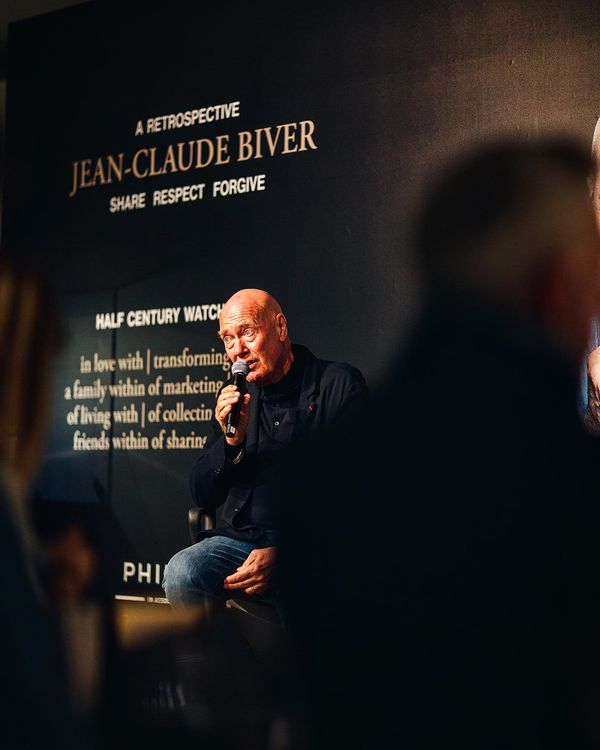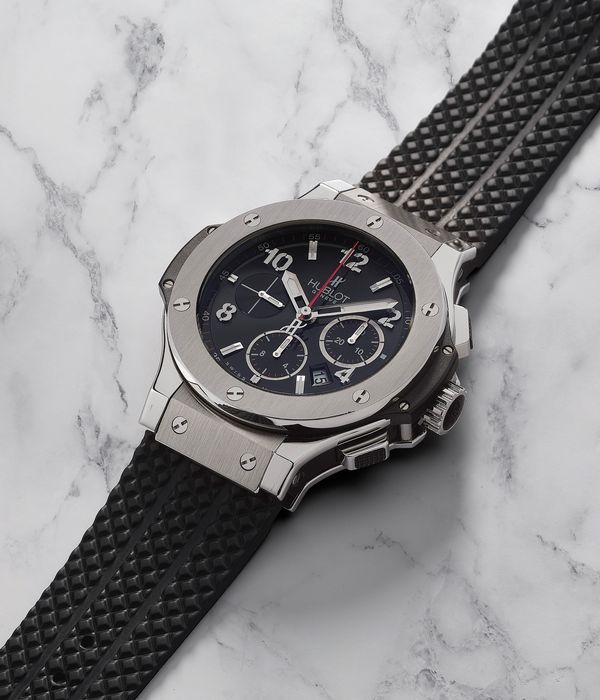The watch industry has certainly evolved considerably over the past twenty years, as seen in the multitude of brands that have joined the fray, giving rise to a wide variety of timepieces to choose from. Behind these companies and products though are the people who not only produce the watches, but who had the initial vision for a narrative that would capture the hearts and minds of collectors around the world. Amongst all these people, it would be difficult to argue that there is one person who has had more influence on how the industry has evolved, not in the way the watches are conceived, but in how the story is told and turned into a passion, than Jean-Claude Biver.
Biver’s story needs to start well before the timeline that we’ve been focusing on, all the way back in 1974, when he first joined the watch industry working for Audemars Piguet, at the time under the guidance of another industry stalwart, Georges Golay (who is credited for persisting with a collection that has enthusiasts frothing at the mouth today: the Royal Oak). Those who have known Biver in recent years know that his energy and drive are second to none, and that patience is perhaps one word that no one would ever associate with him. Needless to say, the pace of the watch industry in the 70s to the 80s was unrushed at best. He rose through the ranks, but that did not satisfy him, and he joined Omega in 1979, in the throes of the so-called Quartz Crisis, when the industry genuinely felt that there might be no future left in mechanical watches. In 1981, Biver took a giant leap of faith, purchasing the rights to Blancpain for 22,000 Swiss francs, and with his associate Jacques Piguet, decided that he would go completely against the grain and focus solely on mechanical watches. The brand’s tagline, which endured for more than 20 years, was: “Since 1735, there has never been a quartz Blancpain watch. And there never will be.” This stroke of genius is credited with saving the Swiss watch industry, and reviving mechanical watchmaking, elevating it well above the basic functionality of timekeeping into an art form. Blancpain would join the SMH Group (today known as the Swatch Group) in 1992, with Biver remaining at its head until 2003. During that time, he was also responsible for another of the group’s brands, Omega, where he established another key marketing tool that would inspire the industry, with high-profile brand ambassadors such as Cindy Crawford and the James Bond movie franchise.
Persistent health issues had been troubling Biver for a few years though, and when he stepped down from the Swatch Group board in 2003, and Blancpain and Omega were given new leadership, few could have expected that he would bounce back spectacularly just a year later, when he went to work with Hublot in 2004. The brand, founded by Spaniard Carlo Crocco in 1980, was well distributed but had not evolved much from its original concept of natural rubber straps (incidentally vanilla scented) with luxury watches. Seeing another major opportunity, Biver tried to acquire the brand from Crocco, who refused, but agreed to sell him a shareholding if he were to run the company. Once again, the rest of the industry, operating only marginally faster than it had twenty years earlier, did not immediately grasp the potential that Biver had seen with the concept of the lifestyle watch, one that breaks the traditional molds by mixing not only rubber straps, but ceramic and other technical or sports materials with the usual steel and precious metal watch cases. The name Biver came up with perfectly encapsulated the idea: Big Bang, representing the fusion of elements that created the universe.
Retailers were not convinced, but Biver’s reputation and friendship took precedence, and the Hublot Big Bang collection was rolled out worldwide, with Biver once again on the road, meeting directly with collectors to spread the gospel of fusion and the luxury lifestyle watch. There is no denying that the energy he put in personally on these trips led to the Big Bang being a tremendous success, such that the LVMH Group would acquire the brand just four years later, with Biver having generated a near ten-fold increase in sales already. It was no surprise that Biver would be handed responsibility for other watch brands within the LVMH portfolio in 2014, namely TAG Heuer and Zenith. Ever the risk taker, he surprised the industry yet again when he added a smartwatch to the TAG Heuer portfolio; how could the man who had championed the mechanical watch so vociferously now develop what some considered its antithesis? Undeterred, Biver felt the experience in itself would be worthwhile, to learn about this new market segment, which he was convinced would turn out to be complementary to the industry as a whole.
Beyond his incredible business sense and subsequent success, Biver is also known for his tremendous human qualities and the friendships he has built, and maintained, through decades in the industry. He has always remained approachable as well, seeming to draw energy from these personal interactions with business partners and collectors. He has also been a tremendous mentor, with many of his associates going on to take the lead at other brands, such as Rolex’s CEO, Jean-Frédéric Dufour, who started his career in the watch industry at Blancpain under Biver.
Having transformed the industry twice, first with the revival of the mechanical watch, then re-opening the door to innovative materials being brought to the fore, Biver stepped away from an operational role with LVMH in 2018, leaving the stage to his successors at TAG Heuer, Zenith, and Hublot. You might think that he would be more than ready to enjoy the fruits of his labour and finally take a real breather, but there is always a sense that, given the right opportunity or idea, JCB (as he is affectionately known) would not be beyond a repeat performance.



